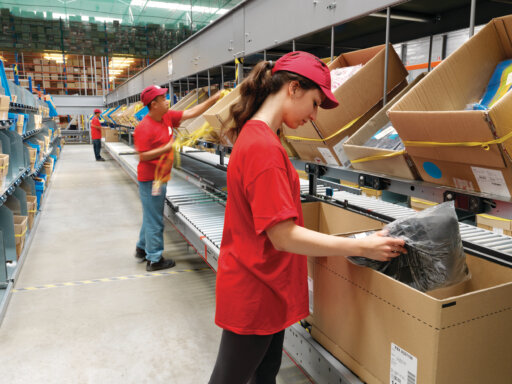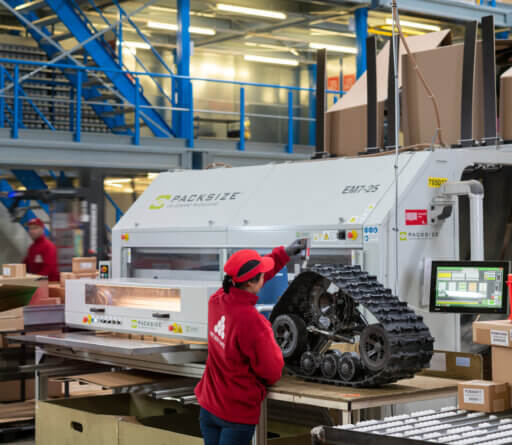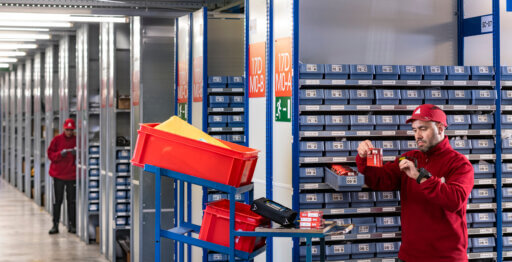Market insights: Impact of Electrification on Aftermarket Business and Spare Parts Demand
The evolution of electrification within the automotive industry is set to significantly reshape the aftermarket business landscape and alter the dynamics of spare parts demand. The shift is marked by increasing production and sales of electric vehicles (EVs) globally, driven by environmental concerns, regulatory pressures, and advancements in battery technology. As a result, both OEMs and aftermarket players must adapt to this changing automotive landscape. This article outlines four key areas impacted by this trend:
- Rising Electrification Trends:
The automotive industry is witnessing a clear trend towards electrification, which significantly impacts the demand for spare parts in the automotive aftermarket business. The increase in EV production and sales highlights this momentum, prompting a need for aftermarket businesses to re-evaluate their strategies.

Source: International Energy Agency
- Impact on Aftermarket Business:
Electrification presents both challenges and opportunities for aftermarket businesses. Traditional internal combustion engine (ICE) vehicles have a broader range of spare parts, including many wear-and-tear components. In contrast, EVs have a simpler architecture with fewer moving parts and limited mechanical components. Consequently, demand for traditional spare parts, like engine components and exhaust systems, is anticipated to decline, potentially leading to revenue shortfall for aftermarket suppliers focused solely on ICE vehicles. However, market research indicates that the product life cycle of ICE vehicles is extending – up to 13 years compared to the previous 10 – providing a prolonged demand period for wear-and-tear parts.
Conversely, the rise of EVs opens new avenues for aftermarket businesses. The demand and availability of main components specific to electric powertrains, such as batteries, electric motors, and charging infrastructure, will increase steadily. This shift necessitates that aftermarket players diversify their product offerings and develop expertise in servicing and maintaining electric vehicles. The logistics of handling, storing, and distributing high-value components like batteries will be a challenge for logistics service providers supporting OEMs’ aftermarket business.
- Evolution of Spare Parts Demand and demand frequency:
The electrification of vehicles is expected to reshape the landscape of spare parts demand. While certain components will witness a decline in demand, there will be a surge in the requirement for electric-specific parts and accessories. Additionally, the longevity and durability of EV components may impact the frequency of replacements, potentially altering the aftermarket’s traditional revenue streams and business models.
Moreover, the introduction of new technologies, such as autonomous driving features and advanced driver-assistance systems (ADAS) in both EVs and ICE vehicles, will further influence demand for chassis and body parts. Aftermarket suppliers will need to adapt to the changing needs of modern vehicles to stay relevant.
- Strategic Imperatives for Aftermarket Players:
To thrive in this evolving landscape, aftermarket businesses must embrace innovation and invest in their R&D endeavours to develop specialized capabilities in servicing electric vehicles. Diversifying product portfolios to include both traditional and electric-specific spare parts will be vital to meet the evolving needs of customers and capitalize on emerging market opportunities.
Collaboration and partnerships with OEMs, technology providers, and other industry stakeholders will be vital for aftermarket players to stay abreast of technological advancements and market developments.
In summary, our aftermarket insights highlight the transformative impact of electrification on the aftermarket business and spare parts demand. While this transition presents challenges, it also offers lucrative opportunities for aftermarket players willing to adapt, innovate, and strategically position themselves to capitalize on the evolving automotive landscape.
For further insights and updates on the evolving landscape of Aftermarket, let’s stay connected.
Thibaut Van den Berghe
 Cleaned returnable pallet stacks[/caption]
Tailored Solutions:
Recognizing the diverse needs of OEM’s, Katoen Natie provides tailored solutions designed to meet specific requirements. Whether it involves optimizing inventory management, implementing innovative technologies, or enhancing sustainability practices, our solutions are customized to drive success for our partners.
[caption id="attachment_12277" align="alignnone" width="512"]
Cleaned returnable pallet stacks[/caption]
Tailored Solutions:
Recognizing the diverse needs of OEM’s, Katoen Natie provides tailored solutions designed to meet specific requirements. Whether it involves optimizing inventory management, implementing innovative technologies, or enhancing sustainability practices, our solutions are customized to drive success for our partners.
[caption id="attachment_12277" align="alignnone" width="512"] An example of a tailored washing and cleaning solution of reusable industrial packaging[/caption]
Global Experience:
With a robust presence across multiple countries, Katoen Natie brings extensive global experience to every project. Our deep understanding of local regulations, cultural nuances, and market dynamics enables us to navigate complexities and deliver consistent excellence across borders.
Commitment to Excellence:
At Katoen Natie, excellence isn't merely a goal; it's the cornerstone of our commitment. We continuously strive to improve our processes, invest in cutting-edge technologies, and uphold the highest standards of quality and safety. Our unwavering dedication to customer satisfaction ensures that we not only meet, but exceed expectations, driving success for our clients.
In conclusion, Katoen Natie's unparalleled expertise in Industrial and Automotive Packaging Handling Centers, makes us the preferred partner for industrial and automotive manufacturers seeking reliable management of their returnable packaging materials and flows.
Ready to discover how Katoen Natie can tailor solutions to meet your specific needs?
An example of a tailored washing and cleaning solution of reusable industrial packaging[/caption]
Global Experience:
With a robust presence across multiple countries, Katoen Natie brings extensive global experience to every project. Our deep understanding of local regulations, cultural nuances, and market dynamics enables us to navigate complexities and deliver consistent excellence across borders.
Commitment to Excellence:
At Katoen Natie, excellence isn't merely a goal; it's the cornerstone of our commitment. We continuously strive to improve our processes, invest in cutting-edge technologies, and uphold the highest standards of quality and safety. Our unwavering dedication to customer satisfaction ensures that we not only meet, but exceed expectations, driving success for our clients.
In conclusion, Katoen Natie's unparalleled expertise in Industrial and Automotive Packaging Handling Centers, makes us the preferred partner for industrial and automotive manufacturers seeking reliable management of their returnable packaging materials and flows.
Ready to discover how Katoen Natie can tailor solutions to meet your specific needs?



 Picking of smaller spare parts[/caption]
Picking of smaller spare parts[/caption]